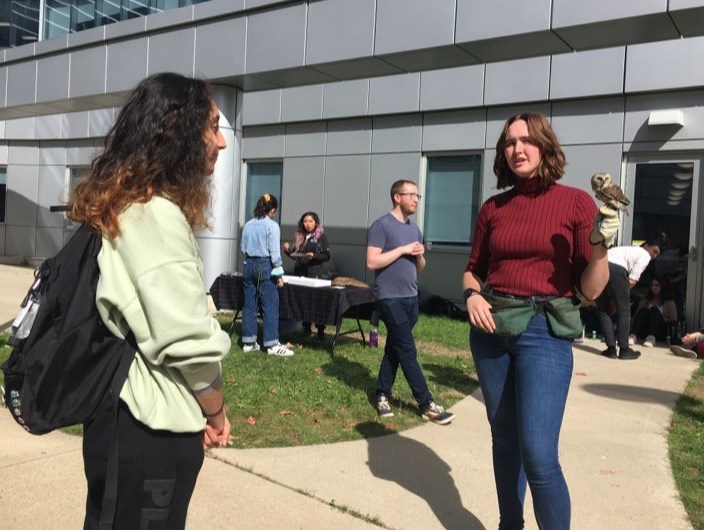If you’ve never seen an owl in your neighbourhood, that doesn’t mean there isn’t one there.
This month, Guelph Arboretum’s Owl Prowl invites everyone to put on their detective’s cap and become a keen-eyed owl observer.
Through a wide variety of hands-on activities, participants will learn about owl plumage, calls and behaviour, habitat requirements, migration patterns, and owl folklore. The evening will end with an outdoor owl prowl on The Arboretum grounds.
“The thing about owls is that they are relatively common, but they just aren’t commonly seen,” said Christa Wise, naturalist intern at The Arboretum.
“There’s a lot more owls around than people realize.”
Owls are nocturnal predators and hunt in darkness, after their fellow humans have gone to bed.
“At night, dawn or dusk, owls are usually active at times when we are not active. And for us, at night, we are not exactly built for seeing things well in the dark,” Wise said.
The Owl Prowl offers people a unique opportunity to be active in nature, listen for owls, and to learn more about local animals that are active at night.
Wise said the most common owl that participants could potentially see or hear in Guelph is the eastern screech owl.
“Owls are fascinating. It's very neat when you do see one. They are very charismatic. I think that’s why people gravitate towards them, especially, because of how elusive they are. I think that really grabs people’s attention,” Wise said.
“For myself, I am drawn to owls for many of the same reasons. They are such unique looking creatures. Because they are out and about when we are not active, they offer a window into a whole other world.”
The Owl Prowl is offered in partnership with Wild Ontario, an environmental and science education program in the Department of Integrative Biology at the University of Guelph.
Through educational activities both on-campus and in the community, the organization works to foster connections with nature and an interest in science.
“I’ve been a volunteer with Wild Ontario for almost five years now. The Owl Prowls have been going on for a long time. They have become a pretty solid staple and one that we continue to offer,” Wise said.
The next Owl Prowls will take place on Feb. 9 for adults and on Feb. 10 for families from 6 p.m. – 8 p.m. at The Arboretum.
The cost is $14 (plus HST) per person, per session. For more information or to register, visit here.
Children must be accompanied by an adult.
“We cap the prowls at about 25 people because it’s a size that our nature centre can hold. Also, when we do go out and look for owls, the more people you have, the more noise there is. Generally, we find 25 is a good number, where we can get people out, enjoying themselves, and having a good time. It’s a manageable size, not only for us, but for the owls,” Wise said.
“One of my favourite things about these types of programs and talks is being able to educate people on the stereotypes or ideas that they have about owls.”
One in particular, Wise says, is that people often think of the ‘wise old owl’.
“I think that by and large, they look very similar to us as compared to other birds. You look at an owl and you’ve got these two big forward-facing eyes, a round face, and a beak that looks like a nose. They look very similar to us,” Wise said.
“As people, we see something like us, and we think, it must be like us. So, owls have this reputation of being smart and intelligent creatures. In reality, they have these big giant eyes, that are so large. If we had eyes that are proportionately the same size as owls, they would be the size of grapefruits in our head.”
Eyes take up two thirds of an owl’s skull space.
“That doesn’t leave a whole lot of room for a brain. But they are good at what they do. They are excellent at surviving. They prioritize sight and hearing," Wise said.
Wise said the Owl Prowl is a unique experience for people to have the chance to see something that they might not otherwise, get to see.
“I ran one of these programs a few weeks ago, and I think about half of the participants in my group had never seen an owl before. They were lucky. Not only did they hear an owl, but they got to see the owl out in the arboretum as well,” Wise said.
“It was their first time experiencing that. I think this is an excellent opportunity. It might not happen, but it’s always fun to go out and look.”



